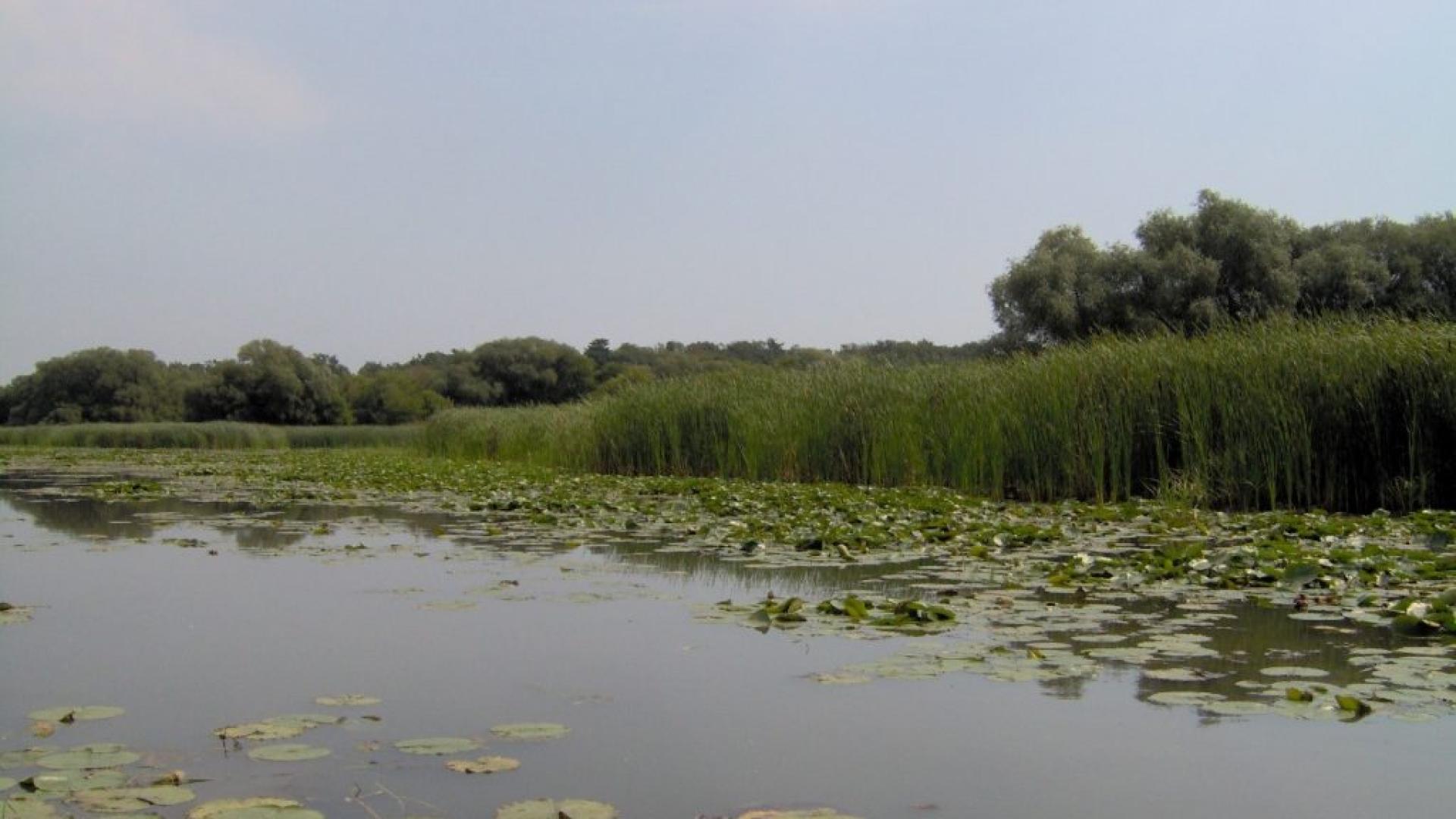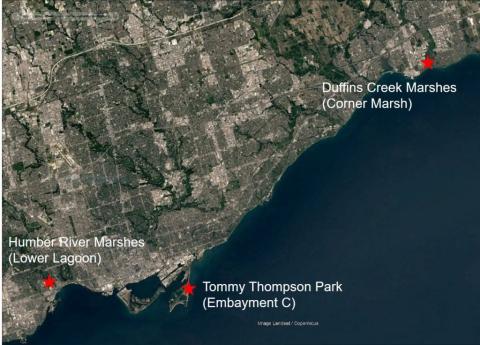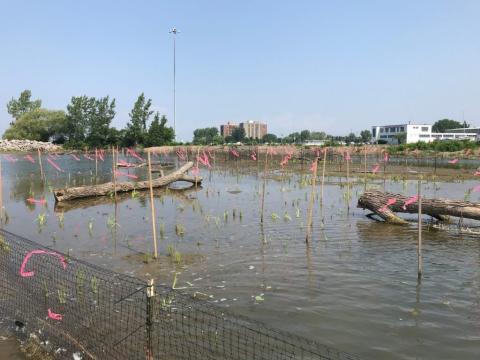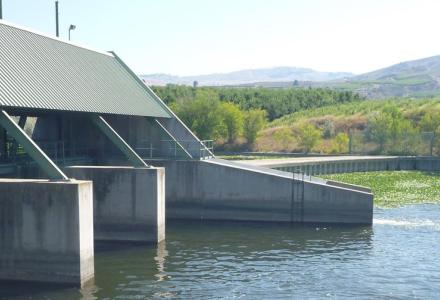
Urbanized environments present a special challenge to restoring the health of the Great Lakes, due to impervious surfaces like roads and roofs, and issues with runoff and combined sewer overflows. Sprawl and waterfront development has led to the destruction of historic wetlands and other habitat.
In the era of climate change, resiliency – making sure that both human communities and habitat for plants and animals can best survive extreme weather events, flooding, and rising temperatures – is more important than ever. Wetlands are a part of solving that puzzle.

Protecting and restoring wetlands can play a key role in helping communities and wildlife manage these changes. Aside from providing habitat and expanding the potential for biodiversity, wetlands provide useful services to waterfront regions, improving water quality and limiting flood damages while also providing recreational opportunities.
Under the Great Lakes Water Quality Agreement, some portions of the lakes and their connecting channels that were severely degraded with pollution and runoff from urban areas were designated as Areas of Concern (AOCs). Restoring habitat for fish and wildlife is typically one of the factors involved in delisting an AOC and restoration efforts can help improve water quality in the process.
With hardened and developed shorelines, there are limited opportunities to restore habitat in areas such as Toronto, Ontario, and Buffalo, New York. Agencies and nongovernmental organizations are working to maximize benefits from available land to help restore habitat in New York’s Niagara River and the Toronto region.
Toronto’s parks pay huge ecosystem dividends following wetland improvements
The Toronto and Region Conservation Authority (TRCA) saw major successes in the past decade thanks to three projects: rehabilitation work at the Humber River and Duffins Creek marshes, and a habitat creation project within Tommy Thompson Park.

After successful restoration projects in preceding years, the TRCA was able to build enough goodwill and trust with regulators to improve degraded wetlands along those waterways, said Gord MacPherson, associate director for restoration projects with the TRCA. The waterfront regions were heavily urbanized through the 1940s into the early ’50s, and the marshes were impacted by gravel extraction, water level regulation in the upper and lower Great Lakes, and the draining of the Ashbridge’s Bay Coastal Marsh in 1912; invasive common carp also forage in the system, destroying the remaining plant communities. In all, between the urbanization, regulation and common carp, the natural resiliency of the ecosystem has been degraded over the decades.
The TRCA constructed carp barriers and water level control structures over the winter of 2005 at the Duffins Creek Corner Marsh, ideally timed for when common carp are out of the marsh, said Karen McDonald, senior manager with restoration projects at the authority, during a June presentation at the International Association of Great Lakes Research. They then lowered the water levels enough for a growing season to plant a mix of vegetation to maximize habitat given the space restrictions; MacPherson likened it to getting 50 years-worth of wetland loss reclaimed in one year.
The effort was successful. MacPherson said that with the carp gone, the submerged vegetation went from covering 5 percent of the marsh to 95 percent in a couple of years, with muskrat lodges, river otters, least bittern and turtles returning. The carp barriers have kept the area healthy, providing a refuge for these species and more.
The Humber River’s Lower Lagoon Marsh saw levees with water level control structures put in place, although the levees were set too low and water was able to breech them, limiting the amount of vegetation that has taken hold there, McDonald said. Recovery work is still underway.
At Tommy Thompson Park, uncontaminated dredged sediment from the harbor was used to create close to 20 hectares (49.42 acres) of new wetland in the park, MacPherson added. The TRCA used hydroacoustic telemetry – a tag tracking technology – to look at a variety of fish species and how they responded to different habitat in the Toronto area; they used this information to maximize the habitat for the largest number of animals possible. The park contains four carp control structures, three of which can be used to control water levels.
McDonald said the areas where carp were prevented from entering have seen flourishing wetland vegetation, while the parts where carp have entered remain damaged and barren. Nevertheless, MacPherson said the healthy areas also are seeing a mix of fish, reptiles and birds, including endangered turtles and migrating birds looking for a place to rest. This has made it not only a healthier place for wildlife, but a regional hotspot for birdwatching and outdoor activities for residents and visitors to Toronto.
“People in urban settings don’t get to (usually) experience conservation lands,” MacPherson said. “You can see the city out there, but it feels like you’re away from the hustle and bustle. You want to see turtles, birds, or go fishing? This is the spot, and people are gravitating to that now.”
Given the stress climate change can bring to habitat around the lakes – with changes to precipitation patterns, algal blooms and water temperatures – these restored and constructed wetlands should help a variety of native species weather future changes and protect the city from floods caused by severe storms, as well as filter out stormwater runoff that makes it to the lake.
Project funding came through various sources including Environment and Climate Change Canada and the city of Toronto, MacPherson said: the Humber River marsh restoration cost CND$60,000, Duffins Creek cost $200,000, and Tommy Thompson Park’s wetlands project was $2.6 million, with a $500,000 grant from Coca Cola.

Turning ecological dead zone ponds into healthy habitat on Unity Island in Buffalo
An island separating the Niagara River from the Black Rock Canal (and city of Buffalo), Unity Island was used as a landfill for many decades and then a public park with three ponds as its centerpiece. Those ponds were the focus of an effort in 2018 by the US Army Corps of Engineers (USACE) and the city of Buffalo to restore 4 hectares (10 acres) of functional (and now rare in the region) coastal wetland habitat to the island and reconnect them to the Niagara River system.
The habitat restoration project is in its first year and expected to last another two, said Andrew Hannes, ecologist with the USACE. The ponds were originally too deep to support much vegetation, and what was there was largely invasive species. After removing the invasive plants, uncontaminated dredged material was used to reduce the depths of the ponds, allowing for different plants to be placed in each. New culverts were installed to connect the ponds to each other and the Niagara River, to allow aquatic life to come and go.

Starting this year and going into 2019 and 2020, aquatic vegetation is being planted in the ponds and monitored to confirm which plants are doing as well as expected. In the shallowest areas of the ponds, emergent plant species such as sedges and bulrushes are being planted, while the deeper areas feature a “submerged aquatic zone” for plants like water celery and pond weeds.
With these plants as a baseline, Hannes said the ponds should provide the kind of marsh spawning habitat preferred by fish species such as muskie or northern pike. Much of the coastal wetlands in the Niagara River were destroyed as the area was urbanized, Hannes said, so restoring even a small amount could make a big difference for fish, plant, reptile and both migratory and local bird species.
Beyond the Unity Island ponds project, Hannes said the USACE has identified several other locations around Buffalo on the Niagara River that could have marsh habitat restored using dredged sediment in coming years. While one site on Unity Island likely won’t make much difference for water quality or shoreline resiliency on its own – being such a relatively small part of the river system – he said more wetlands could cause a positive, cumulative effect. At the least, however, it’s more suitable habitat for species that struggle to find safe, stable homes.
The project ended up costing US$3 million, with money coming through the USACE, and the city of Buffalo through a New York Power Authority Habitat Enhancement Restoration Fund grant.


Kevin Bunch is a writer-communications specialist at the IJC’s US Section office in Washington, D.C.



